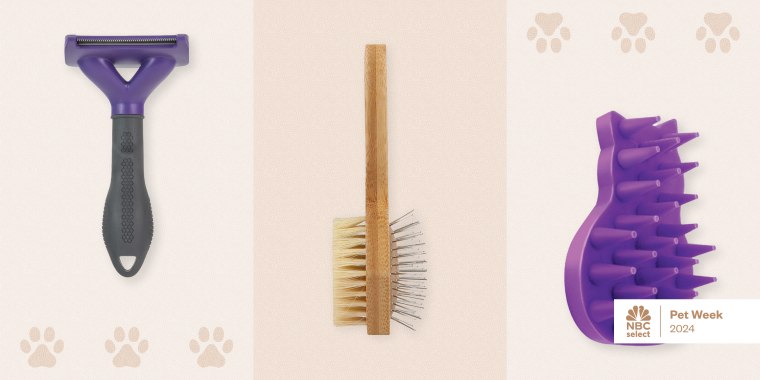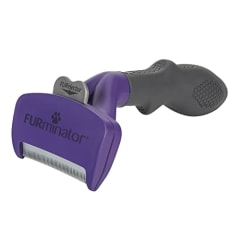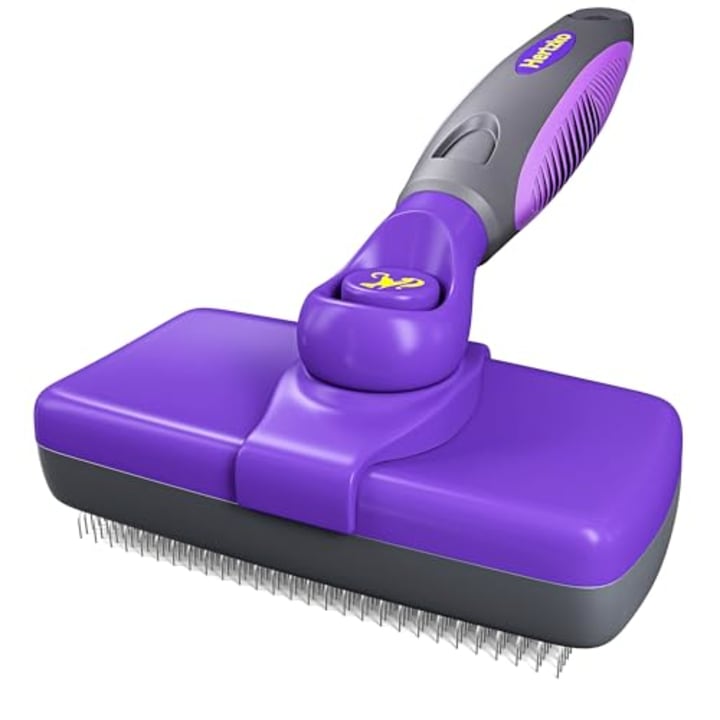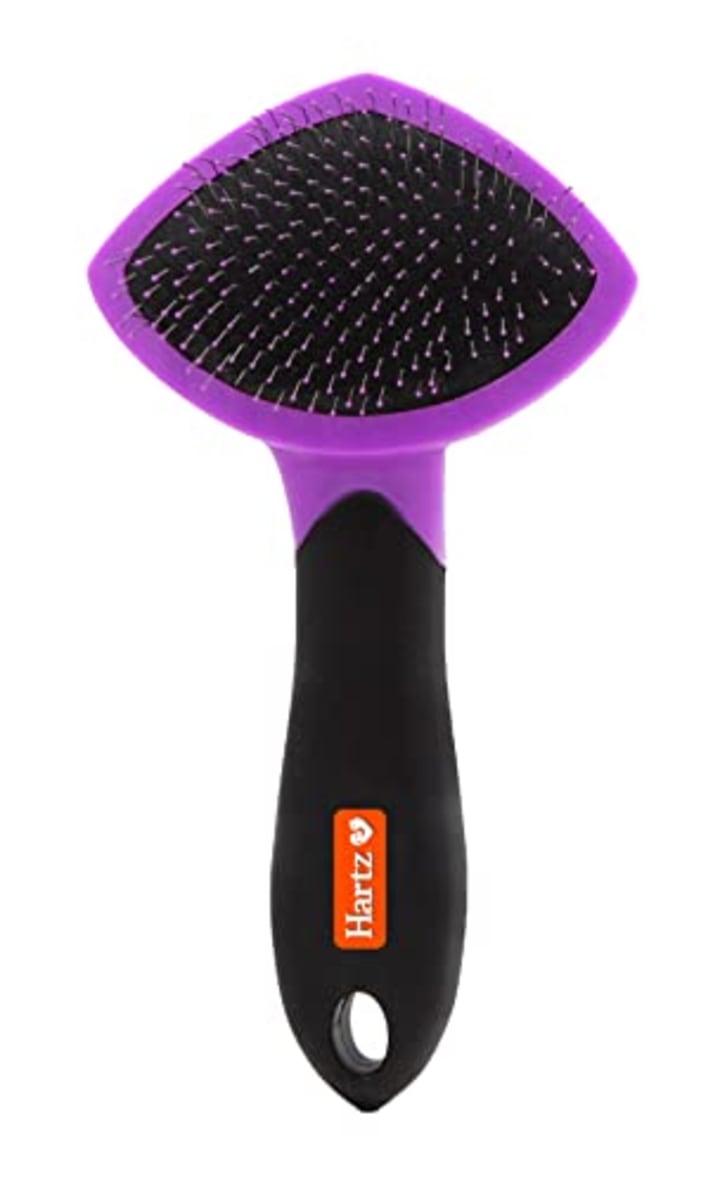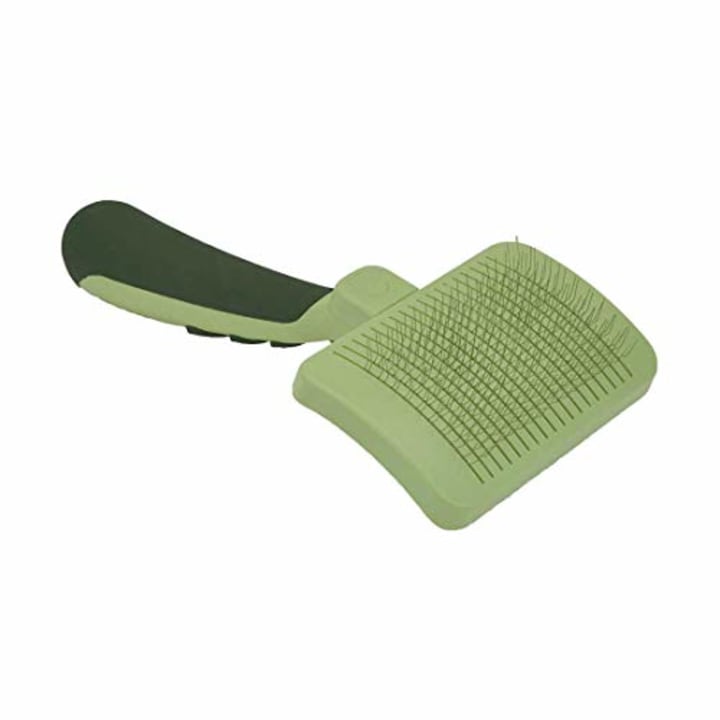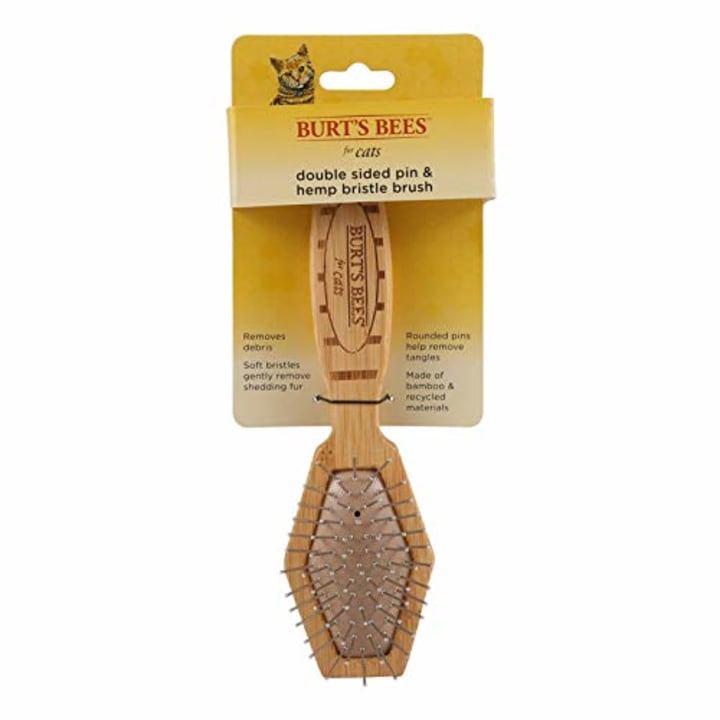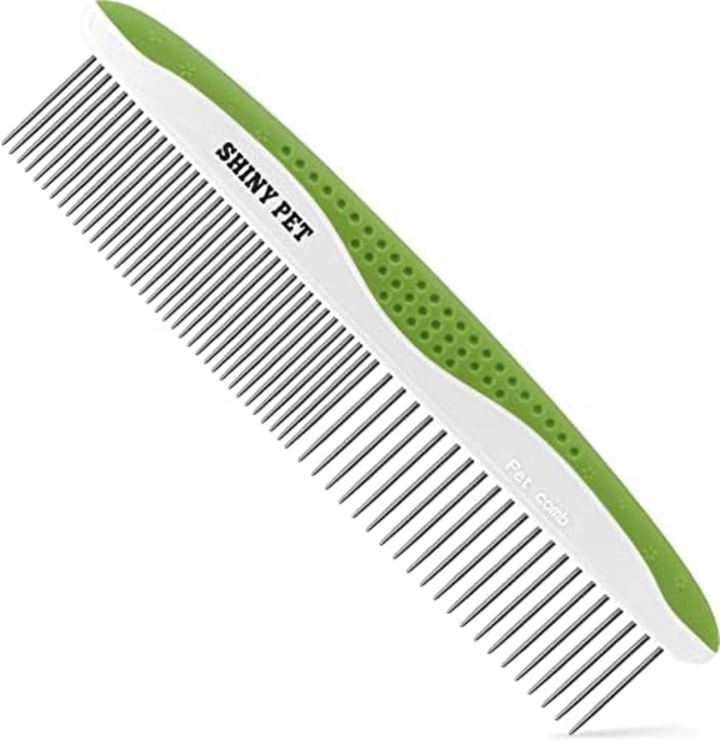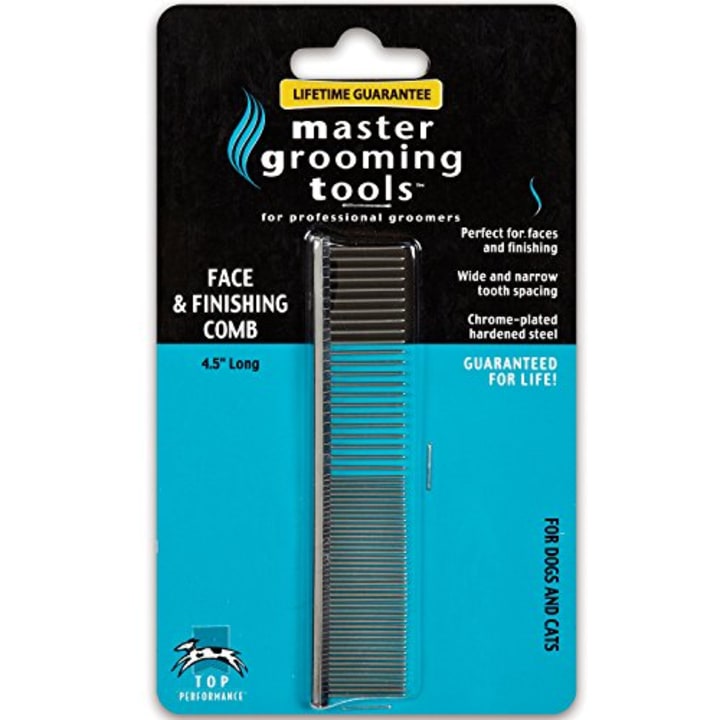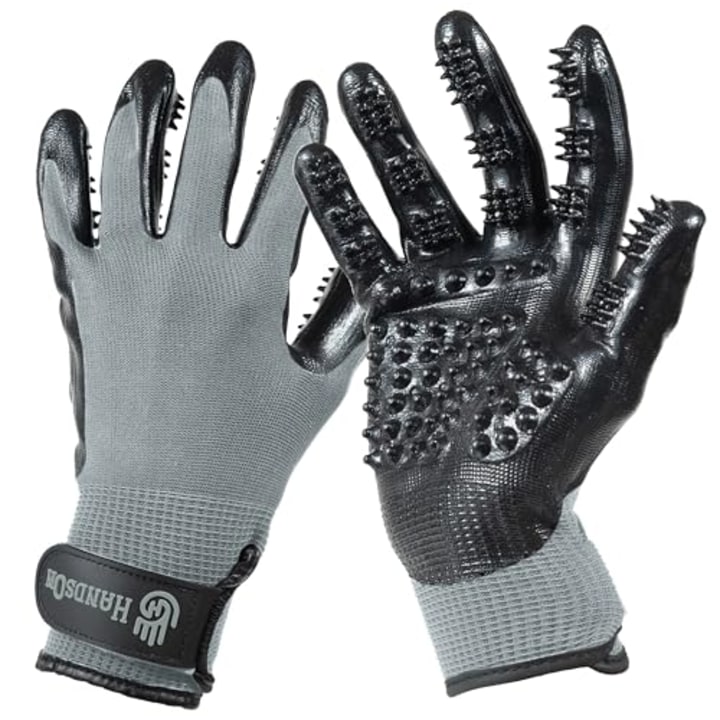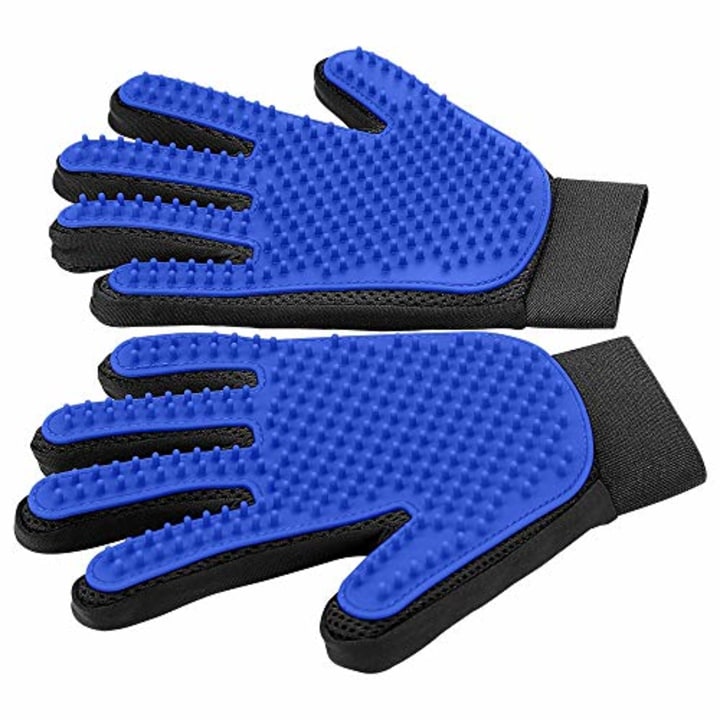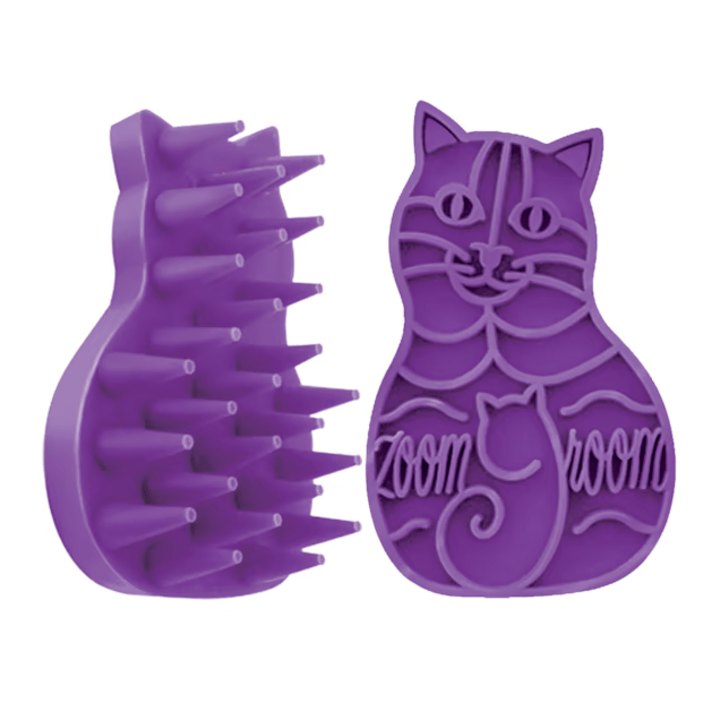We’re celebrating National Pet Week at NBC Select by sharing our favorite pet products. Shop puppy supplies, kitten essentials, travel carriers and more on our pets homepage.
Cats typically groom themselves, but a good cat brush will help keep their coat healthy, reduce matting and minimize shedding to limit pet hair around your home, according to our experts. With so many brush types on the market (some of which can be dangerous if you use them improperly), narrowing down your options can be a challenge. To find the best cat brush that is right for your pet, we spoke to a groomer and three veterinarians about the different brush types and what to look for when shopping. We included their direct product recommendations plus items our editors use to groom their own cats.
SKIP AHEAD How we picked the best cat brushes | The best cat brushes in 2024 | How to shop for cat brushes | Other factors to consider
How we picked the best cat brushes
The best cat brush are safe, easy to use and well-suited for the job at hand. Our experts recommend considering the following factors when shopping:
- Brush type: Cat brushes come in various designs, including slicker brushes for versatile grooming, pin brushes for light detangling, combs for precise jobs, rubber brushes and gloves for skittish cats, de-shedding tools to remove excess fur and de-matting tools for serious knots, according to our experts.
- Bristles: The length of the bristles should directly correlate to the length and texture of your cat’s fur, and the bristle material should be just dense and durable enough to handle the specific job without causing your cat discomfort, according to our experts.
- Safety: The best cat brushes are easy to clean and gentle on both fur and skin, according to our experts. All the tools you consider “should be deemed safe for use on cats” specifically, since “cats have significantly more delicate skin than humans or dogs,” says Molly Bissantz, professional groomer and owner of Grooming by Molly.
The best cat brushes of 2024
Hertzko Slicker Grooming Brush
- Good for detangling
- Comes in two sizes
- Retracts for easier cleaning
- No rubber tip on bristle ends
“This slicker brush is ideal for long-haired cats and will help with gentle detangling and de-shedding,” says Carol Osborne, holistic veterinarian and founder and director of Chagrin Falls Veterinary Center & Pet Clinic. Osborne loves the flexible head of fine bristles, which adapt to the contours of your cat’s body to prevent tugging and discomfort. The brush comes in two sizes and two colors, all with a button that retracts the bristles for easy cleaning.
Type of brush: slicker | Best for: all cats
Hartz Small Slicker Brush
- Durable
- Bristles prevent scratching
- Handle is comfortable to hold
- May be too small for big cats
Bissantz’ favorite tool for the past 30 years is this Hartz small slicker brush, which has gentle nubs on the tips of the pins to prevent scratching and works well for both short- and long-haired pets. “This brush is insanely durable, washable, dryable with my high-velocity dryer, [and] perfect for bath time de-shedding,” plus it’s comfortable to hold thanks to its ergonomic handle, she says.
Type of brush: slicker | Best for: all cats
Coastal Pet Safari Slicker Brush
- Removes excess fur
- Curved design loosens knots
- Retracts for easier cleaning
- No rubber nubs on bristle ends
NBC Select reporter Harry Rabinowitz has used this slicker brush on his cat Zelda for over eight years. The metal pins do “a good job of removing excess fur without being too abrasive,” and the button on the back “pushes all of the cat hair forward on the brush, making it really easy to clean,” says Rabinowitz. Its curved design and thin stainless steel pins also help loosen knots and boost shine, according to the brand.
Type of brush: slicker | Best for: all cats
Furminator Deshedding Tool For Cats
- Minimizes shedding
- Doesn’t damage the overcoat
- Hair-release button
- May cause overgrooming
For cats who shed heavily, three of our experts recommend the Furminator, which is an NBC Select Pet Award winner. “It does a great job of getting the undercoat and significantly cuts down on the total grooming time needed for pets that constantly shed,” says Aziza Glass, veterinarian and owner of CAWLM Veterinary Hospital. Its curved stainless steel edge reaches into the undercoat without damaging the topcoat, plus it has an ergonomic handle and a hair-release button to make cleaning easier, according to Furminator. The brand also sells a smaller version for cats under 10 pounds and a version for short-hair cats. That said, you should exercise caution with this tool, since it is possible to overgroom, says Glass.
Type of brush: de-shedding | Best for: long-haired cats who shed
Burt’s Bees Cat 2-in-1 Double-Sided Pin Brush
- Designed to detangle knots
- Made from bamboo
- Nothing to note at this time
Soft pin brushes work well for cats with short hair, says Bissantz. Burt’s Bees is one of our favorite brands for pet grooming, and this two-in-one brush has rounded pins on one side to detangle minor knots and soft hemp bristles on the other to remove shedding, according to the brand. It’s designed for cats of all sizes and it’s made from bamboo and recycled materials.
Type of brush: pin brush | Best for: short-haired cats
Shiny Pet Grooming Comb
- Great for detangling knots
- Rubber handle for better grip
- Best for small areas
“For pets with long hair it’s imperative to detangle before bathing and brushing,” says Osborne, who recommends this pet comb. Its stainless steel teeth decrease the chance of ripping out fur in long-haired pets, according to Osborne. It also has both densely and loosely spaced teeth with rounded edges to prevent scratching the skin, and the rubberized handle creates a more secure grip, according to the brand.
Type of brush: comb | Best for: all cats
Master Grooming Tools 4.5-Inch Greyhound Comb
- Great for hard-to-reach areas
- Detangles undercoat knots
- Steel teeth for durability
- Best for small areas
Bissantz loves and recommends this greyhound comb for precision jobs: “I use this in the bath to remove eye goobers and debris, [plus it’s] perfect for getting stubborn undercoat [shedding] out and works well in awkward, tight spaces like armpits, legs, behind the ears.” Since its chrome-plated steel teeth are drilled into the spine, it’s also extremely durable, according to the brand. It has both wide- and narrowly-spaced teeth, too, so it works for all types of fur, says Bissantz.
Type of brush: comb | Best for: precision grooming
HandsOn Grooming Gloves
- Suitable for long-haired cats
- Comes in four sizes
- Machine-washable
- Not as effective as others
“These are some of my favorite grooming gloves for cats,” says Shannon Barrett, veterinarian and owner of Downward Paws, a blog about pet health. “They work well for long-haired cats that do not like traditional brushes” because the long rubber nodules massage your cat’s skin and remove fur at the same time, says Barrett. They’re also machine-washable.
Type of brush: glove | Best for: skittish long-haired cats
Delomo Pet Grooming Gloves
- Affordable
- Adjustable wrist
- Need to hand-wash them
NBC Select SEO editor Nikki Brown loves these grooming gloves because they’re affordable, easy to clean and have flexible bristles that her cat Solo can’t resist: “At the mere sight of this thing, he will run ahead of me and sprawl out on the floor with his belly up, ready to be brushed and groomed,” she says. The silicone bristles come in four colors and the gloves have an adjustable strap so you can fit them to your wrist.
Type of brush: gloves | Best for: skittish short-haired cats
Kong Cat ZoomGroom Rubber Brush
- Gentle on sensitive skin
- Rubber design is easy to clean
- Waterproof
- Nothing to note at this time
“Rubber brushes are perfect for sensitive kitties,” says Barrett. “This one by Kong fits comfortably in your palm, and its rubber bristles gently massage your cat’s skin while sweeping away loose fur.” Because it’s made out of rubber, it’s gentle, easy to clean and you can dampen the bristles to make the fur stick instead of flying away, according to Barrett.
Type of brush: rubber | Best for: skittish or young cats
How to shop for cat brushes
The best cat brush will largely depend on your cat’s fur length and specific grooming needs, according to our experts. For example, “a short-bristle, soft brush is ideal for an American shorthair, whereas long-bristled brushes can be used on Maine Coons,” says Barrett. First, narrow down the right type of brush for the job, and then consider bristle length, texture, ease of cleaning and safety.
Types of cat brushes
Cat brushes come in various designs, which are appropriate for different fur lengths, textures and grooming concerns, according to our experts. Here are the primary types of cat brushes and their uses:
- Slicker brushes: “A slicker brush has many rows of thin pins to brush the coat,” says Bissantz. They’re ideal for daily light brushing on cats with medium to long fur and they have curved, thin teeth that help quickly pick up dirt, dander and loose hair, says Barrett.
- Pin brushes: Similar to a brush for human hair, a pin brush has fewer straight pins to brush the coat, says Bissantz. They are also generally not as effective as slicker brushes, though they’re adequate for cats with short or fine hair, according to our experts.
- Combs: Grooming combs have a thin row of metal teeth and are ideal for removing fleas, dislodging crust around the eyes or tackling knots in hard-to-reach spots, according to our experts.
- Rubber brushes: These handheld brushes are great for sensitive or young cats because they fit in the palm of your hand and have soft rubber bristles that gently massage the skin while collecting loose fur, says Barrett.
- Gloves: While they’re not as effective as other brushes, gloves with built-in grooming nodes work well for cats who won’t tolerate other tools, according to our experts.
- De-matting tools: These tools have blades that break apart mats and extreme tangles, but because they’re sharp and can cause damage to the skin and coat if you do not use them properly, you should only use them when needed and on a cat that will sit still, says Bissantz.
- De-shedding tools: De-shedding tools are designed to remove excess fur from the coat and come in various sizes to suit different coat types and textures, according to our experts. While they aren’t as sharp or dangerous as de-matting tools, you should still exercise caution while using them — and de-shedding a cat with fur shorter than 1 inch may cause damage to the coat, says Bissantz.
Other factors to consider when shopping for a cat brush
In addition to the type of cat brush you choose, our experts also recommend keeping the following criteria in mind:
- Bristle length: As a general rule of thumb, the length of the bristles should match the length of your cat’s fur, according to our experts. “Too long and the bristles could scratch/damage the skin, [but] too short and it will take more effort to adequately groom the coat,” says Glass.
- Bristle materials and texture: You should use tougher bristle materials for tougher jobs (like detangling knots and mats). Soft natural fibers are best for removing excess fur without causing irritation, while metal and rubber-tipped wire bristles are ideal for detangling knots and mats, says Barrett. You should avoid nylon bristles, which cause static electricity and increase tangles, says Osborne.
- Ease of cleaning: “Choosing a cat brush that’s easy to clean makes the task less of a chore,” says Barrett. Wider bristles trap less dirt than finer bristles so they’re easier to clean, and some designs are dishwasher-safe or have self-cleaning buttons that make the process even easier, according to our experts.
- Safety: “If the brush has the capability of harming you, it can also harm your cat,” says Glass. Start off gently by choosing soft-bristle brushes that fit comfortably in your hand. If you need to use potentially dangerous tools for de-shedding and de-matting, you should always follow the manufacturer’s instructions.
Meet our experts
At NBC Select, we work with experts who have specialized knowledge and authority based on relevant training and/or experience. We also take steps to ensure all expert advice and recommendations are made independently and without undisclosed financial conflicts of interest.
- Molly Bissantz is a professional groomer and owner of the Boise-based company Grooming by Molly.
- Carol Osborne, DVM, is a holistic veterinarian and the founder and director of Chagrin Falls Veterinary Center & Pet Clinic.
- Dr. Aziza Glass is a veterinarian and the owner of CAWLM Veterinary Hospital.
- Dr. Shannon Barrett is a veterinarian with over a decade of experience and the author and owner of Downward Paws, a blog about pet health care.
Why trust NBC Select?
Maria Cassano is an e-commerce writer, editor and consultant who has written about and reviewed products for almost a decade. You can find her pet-related articles in publications such as Bustle, CNN, Elite Daily and Mic. For this article, she interviewed a professional groomer and three veterinarians.
Catch up on Select’s in-depth coverage of personal finance, tech and tools, wellness and more, and follow us on Facebook, Instagram and Twitter to stay up to date.
